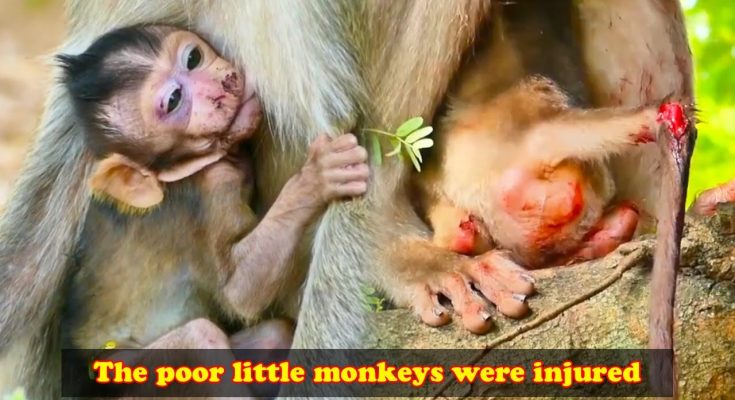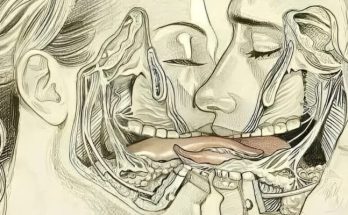Introduction: Why Baby Monkeys Get Injured
The sight of poor injured baby monkeys instantly stirs deep emotions. Their fragile bodies, tiny hands, and innocent faces remind us of the vulnerability of wildlife in harsh environments. But what really happens to these baby monkeys? Why do we so often see them weak, bruised, or clinging desperately to survival? From natural accidents in the forest to human-caused threats, the story of injured baby monkeys is both heartbreaking and eye-opening.
Natural Causes of Monkey Injuries
In the wild, baby monkeys face many natural dangers. As curious creatures, they often climb before they are fully ready, leading to falls from tall trees. Predators such as snakes, eagles, or larger mammals sometimes target them. Even within their own groups, baby monkeys may get injured during fights between adults or by rough play with siblings. These natural injuries are part of survival in the jungle, but for a baby monkey, even a small wound can become life-threatening without care.
Human-Caused Injuries: The Darker Side
Unfortunately, many injuries are not natural. Deforestation, hunting, traps, and vehicles often harm baby monkeys. As forests shrink, monkeys are forced closer to human settlements, where they encounter dangerous obstacles like power lines, sharp metal, and roads. Some are victims of the illegal pet trade, where poachers separate infants from their mothers, often violently. Others suffer from cruelty or neglect at the hands of humans who treat them as entertainment. These preventable injuries highlight the urgent need for awareness and protection.
The Emotional Impact on Monkey Troops
When a baby monkey gets hurt, it’s not only the infant who suffers. Monkeys live in close-knit social groups. Mothers cry out in distress, siblings cling protectively, and the entire troop may react with fear and sadness. These emotional responses show us that monkeys, much like humans, have strong bonds and social compassion. Watching an injured baby monkey struggle reveals just how connected they are as families.
Rescue Efforts: How Baby Monkeys Are Saved
Thankfully, there are wildlife rescue centers and sanctuaries around the world that step in to save injured monkeys. Dedicated caretakers provide emergency medical treatment, clean wounds, treat infections, and feed the infants through tiny bottles. Blankets replace the warmth of mothers, while gentle human hands help them recover. In some stories, monkeys who were once near death slowly regain strength, learning to climb again and eventually returning to the wild. Each successful rescue proves the power of compassion and the importance of human responsibility.
Recovery and Rehabilitation Stories
Some of the most inspiring wildlife stories involve the rehabilitation of baby monkeys. A weak infant, once unable to move, might recover enough to swing freely again. Rescued monkeys often learn survival skills in sanctuaries before being reintroduced into the wild. Others, too injured to return, live safely in sanctuaries where they receive lifelong care. These success stories give hope, but they also remind us of the ongoing threats that cause such suffering in the first place.
Why Protecting Baby Monkeys Matters
Baby monkeys are not just adorable creatures; they are vital to forest ecosystems. By eating fruits and spreading seeds, monkeys help regenerate forests, which in turn maintain healthy air and climate. Every injured monkey lost is not only a tragedy for its troop but also a blow to the balance of nature. Protecting them means protecting biodiversity and the future of our planet.
How You Can Help Injured Monkeys
Awareness is the first step. Watching a video of poor injured baby monkeys may make you feel sad, but turning that emotion into action can create change. You can help by:
-
Supporting local wildlife rescue centers through donations.
-
Sharing awareness about the dangers of the illegal pet trade.
-
Refusing to keep monkeys as pets.
-
Supporting reforestation and conservation projects.
-
Educating others about the importance of respecting wildlife.
Even small efforts, when multiplied, can reduce suffering and create safer environments for monkeys to thrive.
Conclusion: A Call to Compassion
The question “What happened to injured baby monkeys?” does not have a single answer. Some are hurt by nature, others by human actions, but all deserve compassion and care. Their survival depends not only on the strength of their little bodies but also on the kindness of humans willing to help. By protecting the most vulnerable, we ensure a world where baby monkeys grow up safe, forests remain alive, and compassion becomes the legacy we leave behind.



